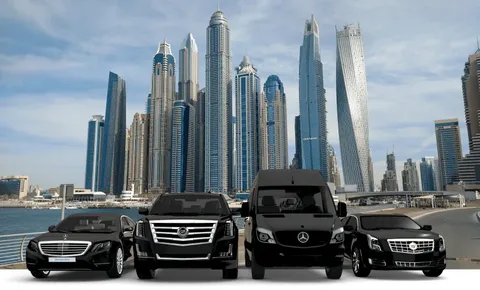Car shipping from Europe to Dubai is a growing trend fueled by the demand for high-quality, luxury, and specialized vehicles in the region. For many car enthusiasts and businesses, Dubai offers a unique opportunity to showcase and own vehicles that stand out in the market. However, successfully transporting a car from Europe to Dubai involves a meticulous understanding of shipping logistics, customs regulations, and the steps needed to ensure a seamless experience.
The process begins with deciding why Dubai is a popular destination for imported cars. Known as a global hub for luxury and innovation, Dubai boasts an extensive automotive culture that thrives on uniqueness and exclusivity. Many European vehicles, including luxury brands like Ferrari, Porsche, and Rolls-Royce, are not only sought after but also considered status symbols. Importing these vehicles allows owners to access features and models unavailable locally while potentially saving money compared to purchasing through local dealerships.
When planning to ship a car from Europe, one must consider the two primary transportation methods: Roll-on/Roll-off (RoRo) and container shipping. RoRo shipping is the most cost-effective option, designed for standard vehicles without additional cargo. Vehicles are driven onto specialized vessels and secured for the journey. While efficient, RoRo exposes the car to environmental elements during transit. On the other hand, container shipping offers added security by enclosing the vehicle in a sealed container. This method is especially favored for luxury or vintage cars that require extra protection from weather, dust, and handling damages.
Understanding the costs involved is crucial. Shipping costs can vary significantly based on factors such as vehicle size, shipping method, and additional services required. While RoRo is more affordable, container shipping offers peace of mind for high-value cars. Beyond freight charges, importers must account for customs duties in Dubai, typically calculated as 5% of the car’s value. Other expenses include port fees, vehicle insurance during transit, and local taxes. Preparing a budget that includes these costs helps avoid financial surprises and ensures a smooth shipping process.
Documentation is another vital component of car shipping. Proper paperwork is required to clear customs in Dubai. The most critical documents include the vehicle’s original invoice, registration certificate, and an export certificate from the European country of origin. Importers also need to provide personal identification, such as a passport and Emirates ID if they reside in Dubai. Organizing these documents before shipping is essential to avoid delays and additional costs upon the car’s arrival.
Choosing a reliable shipping partner is paramount to the success of the process. Experienced companies specializing in car shipping from Europe to Dubai offer comprehensive services, including customs clearance, tracking, and insurance. A trusted partner can provide valuable advice on the best shipping methods, estimate costs accurately, and manage unforeseen challenges. Researching shipping companies, reading reviews, and requesting detailed quotes are essential steps in selecting the right partner for your needs.
Customs clearance in Dubai is one of the most complex aspects of the shipping process. All vehicles must meet Gulf Cooperation Council (GCC) standards to be eligible for registration. These standards encompass safety and environmental requirements, ensuring the car complies with local regulations. Upon arrival, the vehicle undergoes inspection to confirm compliance. Importers must be prepared to address any modifications or repairs required to meet these standards.
Another critical step is managing potential risks during transit. While most shipments proceed without incident, unforeseen issues such as weather delays, handling errors, or minor damages can occur. Comprehensive insurance coverage protects against these risks. Many shipping companies offer insurance options as part of their service packages, but it’s essential to review the terms and ensure they provide adequate protection. For rare or high-value cars, additional insurance may be necessary for peace of mind.
The journey doesn’t end with the car’s arrival in Dubai. After clearing customs, the vehicle must be registered with the Roads and Transport Authority (RTA). Registration involves several steps, including paying the required fees, obtaining UAE license plates, and purchasing vehicle insurance. The RTA ensures that imported vehicles meet all local requirements and are safe for use on Dubai’s roads.
Preparing the vehicle before shipping is also an important consideration. Cars should be thoroughly cleaned, with all personal belongings removed to comply with customs regulations. Disabling alarms and securing loose parts minimizes potential issues during transit. For container shipping, additional steps such as securing the car with straps or braces ensure it remains stable throughout the journey.
Shipping a car from Europe to Dubai can be an intricate process, but with proper planning and expert guidance, it becomes a manageable endeavor. The allure of owning a unique European car in Dubai’s thriving automotive culture makes the effort worthwhile. By understanding the logistics, choosing the right shipping partner, and complying with customs regulations, importers can enjoy a seamless experience. Whether it’s a luxury vehicle, a vintage classic, or a family car, bringing a car from Europe to Dubai opens up opportunities for personalization, savings, and a touch of exclusivity.
